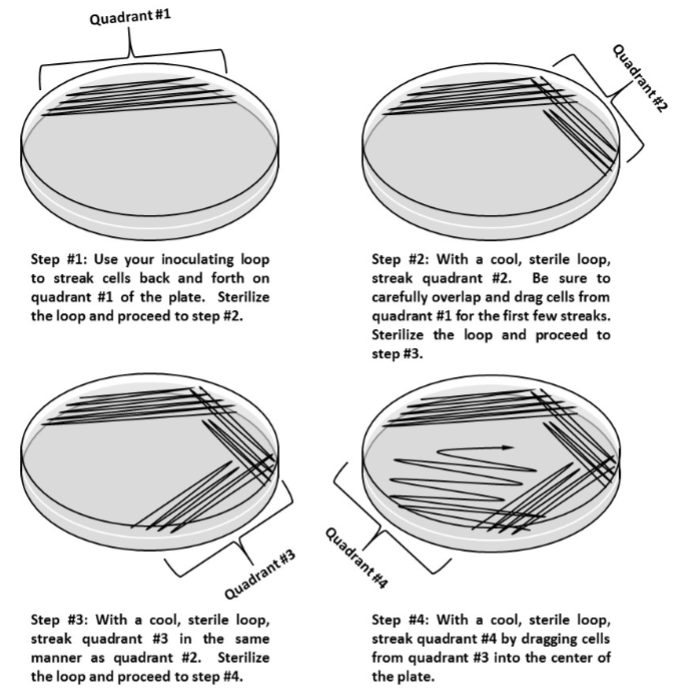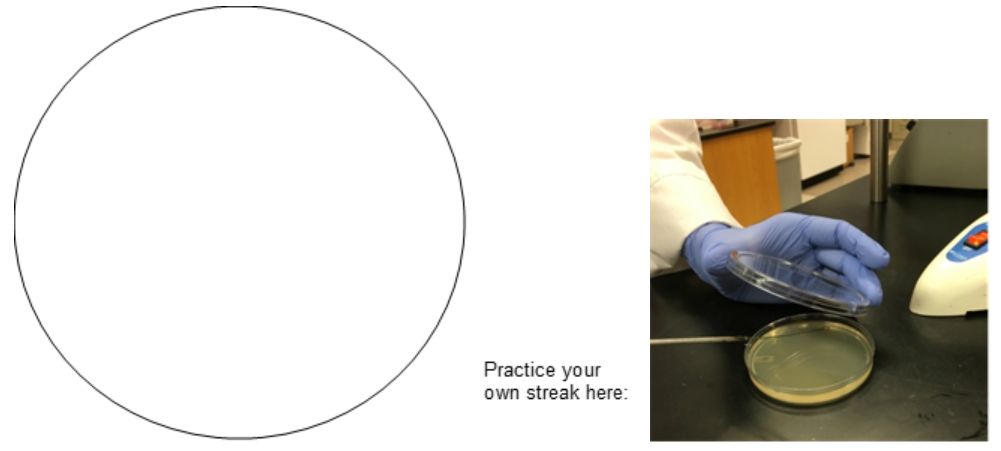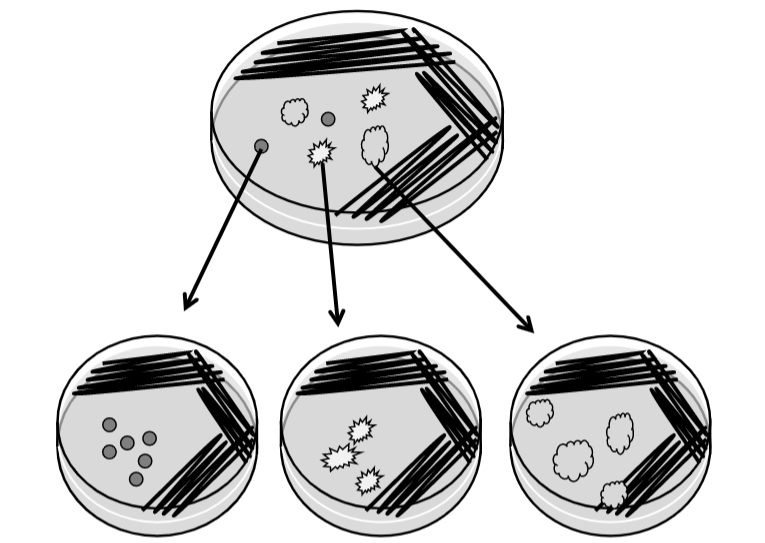8.2: Introduction
( \newcommand{\kernel}{\mathrm{null}\,}\)
Protect yourself, Protect others, Protect your cultures.
This is the mantra of aseptic technique. Microbes are ubiquitous and one must work purposefully to exclude them. The point of aseptic technique is to prevent the spread of contamination. In our lab classroom we don’t want to spread contamination to ourselves, or lab mates, or take it home. This means we work not to spill cultures, create aerosols, set loops down on the table prior to sterilizing them, leave our lab coats in lab, etc. In addition we want to maintain pure cultures. A pure culture is a single species/type of bacterium being cultured (grown) in media (a plate, slant, or broth). To maintain pure cultures we enlist a variety of aseptic techniques. For example, one sterilizes their instrument before and after touching bacterial growth when transferring it, keeping cultures protected from environmental contamination, etc.
The following is a short list of things to keep in mind when working with cultures (though it is not meant to be the only things to consider, your instructor will discuss and demonstrate many others, and many are outlined in the lab safety and lab biohazard guidelines so review those).
- Keep workspace clear of personal items; use pens, pencils, etc., provided for you
- Get together with your group to get organized before you gather materials and get started
- Always use a test tube rack when transporting test tubes
- Never pick up or handle a test tube by the cap, they are loose and the test tube may fall, break, and cause a spill
- Prevent aerosols: Do not vigorously mix or vortex cultures, do not put hot loops into a culture-broth or agar, do not use the incinerator to dry stained slides (you will learn to air dry and heat fix them later)
- Never set test tubes or petri plate lids down. When transferring cultures, you will hold onto the lids and never set them down
- Inoculate test tubes as shown, don’t try to invent a new method
- Keep petri dish covered with the lid slightly raised when transferring bacteria in and out of the plate.
- Sterilize loops and needles in the incinerator before and after touching bacterial cultures with them.
- Wash hands, wash hands, wash hands!
As stated above, creating and maintaining pure cultures is an important skill to acquire, and along with its general importance it will be critical during the Unknowns, and at some point you will be assessed on your ability to do this. The streak plate method is a way to separate bacteria in a mixed culture in order to isolate and subculture single species/types of bacteria into a pure culture. Natural samples (soil, water, skin), patient samples, surfaces, etc., will be a mix of bacteria when cultured onto a plate or into a broth. In order to study or identify (ID) one bacterium, it must be separated from the mix.
Streak plates are also used when maintaining pure cultures. One cannot tell if a broth culture is pure or contaminated. But if one streaks the broth onto a plate, one will be able to. A streak plate takes one loopful of bacteria from a broth, or a portion of a colony from a plate, and methodically spreads that amount of bacteria around the entire plate. After the plate is incubated, the first part of the streak there will have a lot of bacterial growth and no separate colonies. As the bacteria are spread around the plate, eventually bacterial cells will be well separated from each other and grow into single colonies during incubation. The individual colonies can then be subcultured separately to make pure cultures.
One colony grows from a single bacteria/bacterial unit.
Quadrant Streak Plate for Isolation:


After the plate is incubated, the first part of the streak will have a lot of bacterial growth and no separate colonies. As the bacteria are spread around the plate, eventually bacterial cells will be well separated from each other and grow into single colonies during incubation. The individual colonies can then be subcultured separately to make pure cultures.

Contributors and Attributions
Kelly C. Burke (College of the Canyons)


